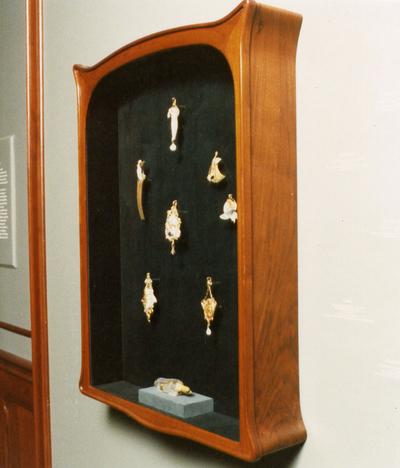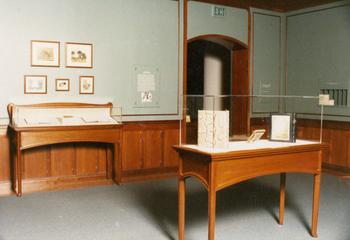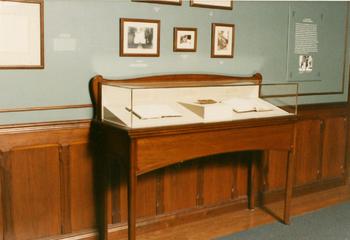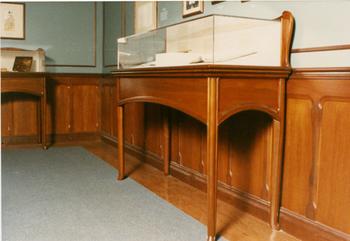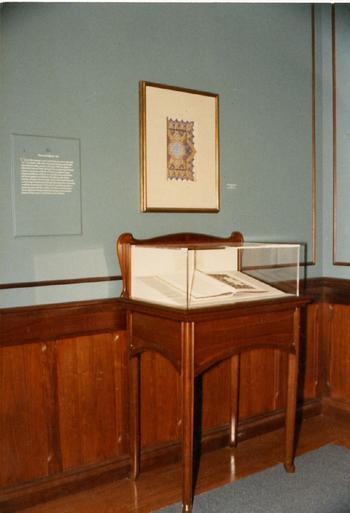« Cherry dining table | Main | No termites »
Exhibition casework
For the opening show of the Smithsonian's Arthur Sackler Gallery, in the winter of 1988, I was asked to bid on a set of art nouveau display cases.
They had very refined drawings, with full-scale renditions of some of the more complex parts. The designers were having trouble finding a craftsman to take on the project given there were only eight weeks or so to pull it off.
Their own shop had its hands full doing the woodwork in the rest of the room. The casework fell to me.
The Smithsonian paid about $7 million for Parisian jeweler Henri Vever's collection of Persian and Indian art. The show included some of Vever's own work, much of which was displayed in the cases.
The one above had a plexiglass front which slid into place from the bottom. The sides were bandsawn; as was the bead on the front, made of four pieces, rounded by hand. The interior is green velvet. Everything was solid walnut with a special stain.
The Smithsonian did the fabric interiors, and plexiglass tops.
The rounded moulding on the back was bandsawn, shaped by hand, and glued to the panel.
Making the legs with a profile cut on the corner went fairly quickly after a couple of restless nights. The complex mouldings around the body panels required another special shop setup.
There were two of these smaller cases.
Vever died in 1943. His collection, renowned at the time, disappeared soon after his death and didn't reappear until 1984.
I disconnected the phone when I got this job, and disappeared myself for the next six weeks.
………………………………………………………………….
STORAGE CLAMPS FOR JAPANESE SCROLL PAINTINGS
Another Smithsonian job.
Japanese scroll paintings have a wooden rod on top for hanging, and another rod attached to the bottom for weight.
When the paintings are stored the top rod is placed into a storage clamp, the clamp closes around it, and the painting is then rolled around the clamp.
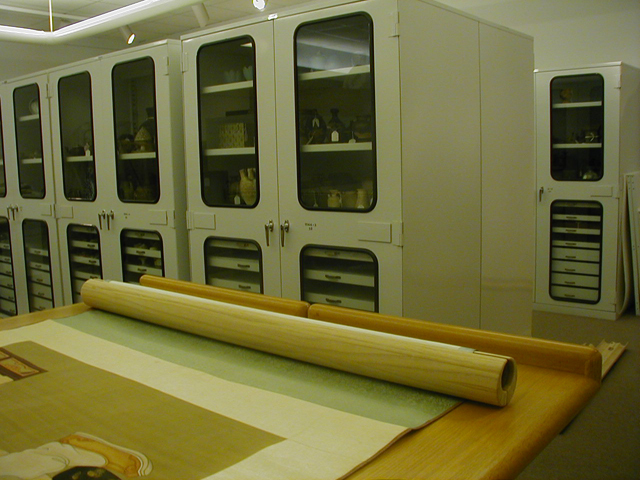
Posted by ronpaci at June 26, 2005 12:35 AM
